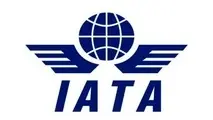IATA: Global passenger demand reached 12-year high in 1H 2017

Growth in the global air passenger traffic market reached a 12-year high in the 2017 first half, as passenger traffic grew 7.9% compared to 1H 2016 and the load factor hit a record 80.7%, according to IATA’s June Air Passenger Market Analysis.
IATA attributed the year’s strong start to an improving global economic backdrop and stimulus from lower airfares. The industry’s annualized growth pace remains ahead of the average growth rate of both the past five (6.4%) and 10 years (5.5%), IATA said.
IATA observed, however, that the upward trend in passenger traffic is slowing from its robust movement (about 12%) at the end of 2016 to around 7% since February. Business confidence, as measured in the services purchasing managers’ index (PMI), has flattened since January and airlines have cut back on discounted air fares (aka “demand stimulation”) to about half of what they were in 1H 2016, a trend likely to continue into the second half of 2017.
Nonetheless, IATA predicted the peak northern summer travel season will likely be record-breaking.
“This is all good news … the demand for travel is strong and that, in turn, will make a positive contribution to the global economy,” IATA DG and CEO Alexandre de Juniac said. “[But] as costs rise, the stimulus of lower fares is likely to fade, and uncertainties such as Brexit need to be watched carefully.”
IATA’s analysis reported that the Middle Eastern-North America international passenger market is showing the adverse effects of a “combination of factors including the recently lifted ban on personal electronic devices, as well as the wider negative stimulation from the travel ban that has now been implemented for certain countries.”
For the first half of 2017, international traffic for Middle East carriers grew 7.3% (in contrast to 11% growth in 1H 2016). “This was the slowest H1 growth rate since 2003, and it was the only region to see growth decelerate relative to the same period a year ago,” IATA senior economist David Oxley said. “[But] passenger growth on the segment between the Middle East and North America was already slowing in early 2017, in line with a moderation in the pace of growth of nonstop services flown by the ‘big-three’ Middle Eastern airlines.”
Through June 30, the biggest increases in international traffic demand were seen by Latin American carriers (up 9.4% year-over-year [YOY]) and African carriers (up 9.2% YOY).
International travel within South America has increased 13% YOY, slightly offset by 0.2% drop in North-South America travel. In June, Latin American carriers saw a 9.7% rise in international traffic while capacity increased 9.1%; the load factor grew 0.4 points YOY to 82.1%.
African carriers’ international traffic increased 9.9% in June, as capacity rose 7.1% and load factor increased 1.7 points YOY to 64.3%. Oxley noted the six-month growth rate for African carriers’ international traffic was similar to 1H 2016 (9.6%) but traffic growth has slowed in recent months. “Conditions in the region’s two largest economies have continued to diverge,” Oxley said. “Business confidence in Nigeria has risen sharply in recent months, but South Africa’s economy fell into recession in Q1 2017.”
In the total passenger market, Asia-Pacific carriers and European carriers are showing the strongest growth for the first half of the year, at 10.6% and 8.8% growth YOY, respectively.
Traffic on Asia-Europe routes continues to improve following terrorism-related disruptions in early 2016, though demand on international routes within Asia has paused, IATA said. Domestic traffic in China is up 15.2% YOY (compared to 9.8% growth for 1H 2016) and India’s domestic traffic increased 18.6%, down from 23.3% growth in 1H 2016.
European carriers’ passenger traffic growth in the first half of 2017 more than doubled from its 4% pace in 1H 2016, attributable, in part, to increased economic confidence in the region. But IATA noted that that traffic demand growth has moderated over the past four months, as international traffic within the region has reported paused since December.
North American carriers have shown a total market growth of 3.8% for the first half of 2017, as capacity has grown 3.4% and the overall load factor increased 0.3 point YOY to 83.1%. North American airlines’ international traffic was up 4.3% YOY during the first half (contrasted with 2.1% a year ago). “The comparatively robust economic backdrop in North America is expected to continue to support outbound passenger demand in the near-term,” Oxley said. “However, anecdotal evidence has continued to suggest that tourists are being deterred by the additional security measures now involved with travelling to the US.” Domestic travel in the US increased 3.4% during the first half of 2017, slower than its 4.6% growth rate a year ago. US domestic capacity was up 3.3%, resulting in an 84.5% domestic passenger load factor for the year through June 30.



